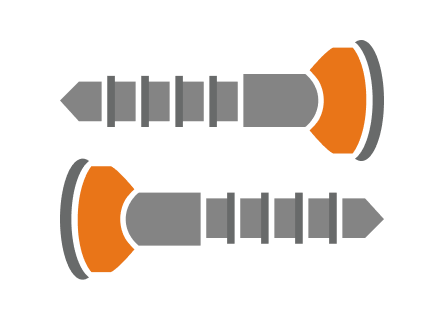-

Cavity Drain Membranes
Internally waterproof basements, cellars and underground structures with a cavity drain system -

Membrane Fixing Plugs
Fixing plugs for securing membranes to a range of substrates and systems -

Basement Membranes
The quick and easy way to effectively damp proof your basement. -

Basement Floor Membranes
Waterproof basement floors and isolate flooring from dampness -

Basement Drainage Systems
Extensive range of reliable drainage systems including fully serviceable sump pumps. -

Cementitious Tanking
Cementitious tanking for waterproofing basements, cellars and underground structures -

External Waterproofing
External structural waterproofing for new build cellars, basements and earth retaining walls. -

ICF Block Waterproofing System
Protect ICF Block Construction from water ingress with effective primary & secondary ICF products. -

Gas Membranes
Protect new build properties from harmful radon gases & water vapour
Learn more about Basement Waterproofing
Basement waterproofing is required when a structure or property, or part of a property, is built at ground level or below. It is likely that there will be a build up of water in the ground surrounding the basement, raising the water table, leading to hydrostatic water pressure. This water pressure is exerted on the floor and walls of the basement and can lead to water penetration through cracks, joints and structural weaknesses in the basement. Without basement waterproofing, this water ingress can then lead to mould, decay, structural problems and other damp-related issues.
Basement Waterproofing Methods
Basement waterproofing can be achieved in two ways, either by blocking the passage of water into the building with external waterproofing or tanking waterproofing. Or you can control the ingress and flow of the water to a pre-determined evacuation point by the use of cavity drainage systems.
Basement Tanking
Cementitious tanking materials are used for basement tanking when there is a requirement to block water ingress into the building. After preparing the surface, the basement tanking slurry is applied to the masonry surface in two to three coats depending on the volume of water ingress. The basement tanking slurry then cures to form a water impermeable surface which should then be covered with a render to protect it. By using this basement tanking method, the basement remains completely waterproof and the walls remain dry and breathable.
Basement Membranes
Basement tanking membranes like PermaSEAL and those manufactured by John Newton and Platon, are designed to control the passage of water using cavity forming membranes, drainage channels and sump and pump water evacuation systems.
Newton Membranes and PermaSEAL Waterproofing Membranes come in a wide variety of sizes and types. Some membranes have a mesh welded on the face for direct rendering or for fixing dot and dab plasterboard systems. Other basement tanking and basement waterproofing membranes are plain, designed for flooring or where a wall is to have a dry-lining finish.
Newton, Platon and PermaSEAL supply drainage options for the collection of water at the foot of the wall and then to control this water into a suitable sump and pump. This will then evacuate the water to the outside of the property into a drain or natural drainage point.
When considering basement waterproofing, it is essential that you look at every possible option. Although the basement may never have flooded previously, it is always a possibility. Installing a system that will deal with this eventuality is essential to every basement waterproofing design.
In addition to our large range of basement waterproofing and basement tanking products, our expert team are able to advise you on all aspects of waterproofing and damp proofing for any job large or small.
Permagard are the leading official Newton Membranes stockists. We also stock gas membranes to protect against radon gas in situations when there is no hydrostatic pressure. Whether you need a specialist installer in your area or advice about tanking basements, our technical advisors are here to help. Simply call us on 0117 982 3282.
Read more on Basement Waterproofing in our Complete Guide to Basement Conversions or learn how to Comply with BS8102 Legislation.